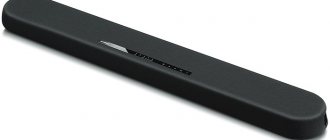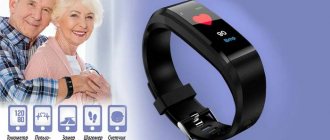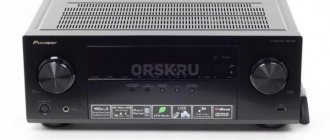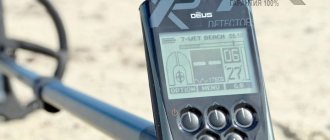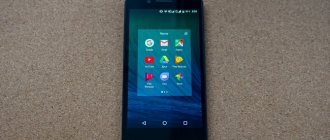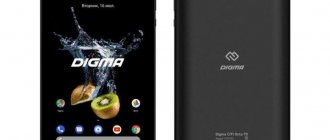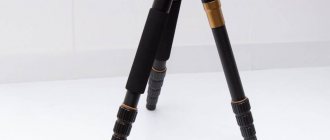Rating of the best phones with good signal reception
| Photo | Name | Rating | Price | |
| #1 | Xiaomi Mi 9 | ⭐ 99 / 100 103 - votes | Find out the price | |
| #2 | Nokia X Dual Sim | ⭐ 98 / 100 27 — votes | Find out the price | |
| #3 | ASUS ZenFone 4 ZE554KL | ⭐ 98 / 100 17 — votes | Find out the price | |
| #4 | LG V30+ | ⭐ 97 / 100 22 - votes | Find out the price | |
| #5 | Huawei Mate 10 Pro | ⭐ 96 / 100 27 — votes | Find out the price | |
| #6 | Nokia 8.1 | ⭐ 96 / 100 23 - votes | Find out the price | |
| #7 | Xiaomi Redmi Note 8 Pro | ⭐ 95 / 100 51 - voice | Find out the price | |
| #8 | Alcatel 1X 5059D | ⭐ 94 / 100 11 — votes | Find out the price | |
| #9 | HTC U12 PLUS | ⭐ 93 / 100 7 — votes | Find out the price | |
| #10 | HUAWEI P30 Pro | ⭐ 93 / 100 38 — votes | Find out the price | |
| #11 | Honor 10 | ⭐ 91 / 100 63 - votes | Find out the price |
Which phone with good signal reception would you choose or recommend?
Take the survey
TOP 10 phones with high-quality cellular reception
Honor 10
Honor 10
| LTE | 1,3,5,7,8,19,20,38,40,41 |
| GSM | Supported. |
| UMTS | 850, 2100, 900 |
| CDMA | Supported. |
This model from a breakaway brand from Huawei could not be ignored by the experts of this site. She really manages to keep a good connection, and in several different standards, which is commendable.
And what we can say for sure is that this smartphone knows how to attract attention. Not only the appearance contributes to this, but also the technical characteristics, which are quite good for this model.
Let's take a closer look at it. Among the advantages of this phone are the following components:
- powerful hardware, especially the processor, thanks to which the phone does not slow down;
- powerful antennas that receive the signal as clearly as possible in accordance with their capabilities;
- support for 3G and 4G communication standards.
Among other advantages that are no longer related to signal reception, the following “tricks” include:
- support for Huawei SuperCharge technology;
- availability of NFC and IR port interfaces;
- bright high-quality screen;
- good photography with the support of artificial intelligence;
- fingerprint sensor under the screen (ultrasonic version).
This model also has a drawback. We are talking about moisture protection. It’s practically non-existent, so you should take care of your phone, because moisture getting on it leads to deterioration in the antenna’s performance, and then you can’t expect high-quality signal reception.
In general, this device is perfect for those who often travel outside the city. For example, to the dacha on a day off or hunting/fishing. A large number of reviews mentioning this only confirm the benefits of this phone.
pros
- high quality of communication (no noise or loss of communication);
- fast mobile internet;
- very fast charging;
- performance is beyond praise.
Minuses
- The battery of this phone is quite weak;
- The phone case is not protected from moisture.
Honor 10
HUAWEI P30 Pro
HUAWEI P30 Pro
| LTE | 1—9, 12, 17—20, 26, 28 + TDD LTE support |
| GSM | Supported. |
| UMTS | 800-2100 MHz |
| CDMA | 800 MHz |
Which smartphone from the Chinese company Huawei is the most common today? This is the best representative of this company today - HUAWEI P30 Pro, which we will consider in more detail.
Huawei P30 Pro is the flagship of this company. It is logical that this model will be considered the most expensive and best in terms of technical characteristics.
First of all, we should note the large diagonal screen of high quality. This way everything will be visible clearly. Secondly, it is necessary to note the use of powerful hardware, with which the phone works without brakes and, most importantly, clearly picks up the signal from cell towers. Thirdly, its autonomy indicators allow you to enjoy all the benefits of high-quality communication for a long time.
The disadvantages cannot be avoided - there is no perfect phone. At the very least, this smartphone is not very comfortable to hold. Its curved edges also “glare”, and when you touch them, the phone is activated, which is inconvenient, especially when it is in your pocket.
The price of this phone, of course, is rather high, but it’s worth it, especially since everyone wants to have a flagship that will perform its task 100%.
What will the experts say? The phone performs just fine in cases where the signal is practically impossible to pick up. Even though there are two SIM cards in the phone. True, their work is alternating, not simultaneous.
pros
- quite capacious battery;
- good connection quality;
- Ease of use;
- large screen size.
Minuses
- high price, even taking into account its flagship status.
Video – Huawei P30 Pro Review
HUAWEI P30 Pro
HTC U12 PLUS
HTC U12 PLUS
| GSM | 850, 900, 1800,1900 |
| LTE | B4/B12/B17/B28/B20/B5/B8/B3/B1/B7/B32/B2/B13/B66 + TDD LTE |
| UMTS | 850, 900, 1900, 2100 |
For the price of this phone, potential buyers have every right to get a high-quality phone with which they don’t have to worry about losing connection. But did HTC succeed?
Yes, HTC U12 Plus is a very expensive flagship, whose competitors are the flagships of other manufacturers - Huawei P20 Pro and Samsung Galaxy S9. In most of the criteria, this model is not inferior to others. There are moments where HTC is ahead of everyone.
A powerful sound system, a high-quality wireless network and a pleasant appearance - many of the pleasant features of this phone determine the possible choice in the future. The only inconvenience is the side edges of the screen, which make the phone body slide. In addition, the high price creates some problems.
What do people say who bought a smartphone for fifty thousand rubles? HTC's flagship looks quite ordinary. Nothing that remarkable. Yes, the phone receives well, yes, it looks beautiful. But it can hardly be called top-end.
Who should buy this phone? At least for those people who are not worried about the financial component of the issue. But if you need high-quality communication and at the same time you do not want to delve too deeply into the functionality of the future phone, then the experts at Obzor-Expert.com will advise you one thing - leave this model on the store counter.
pros
- good cellular reception;
- consistently high performance;
- receives calls even in remote areas;
- quickly restores communication after it is lost.
Minuses
- overpriced – you can find a cheaper flagship;
- a somewhat weak battery that won’t last you far;
- The sensor doesn't work very well.
Reviews and prices for HTC U12 Plus
Alcatel 1X 5059D
Alcatel 1X 5059D
| UMTS | 850, 900, 1900, 2100 |
| LTE | Supported. |
| GSM | 850, 900, 1800, 1900 |
| CDMA | Not supported. |
The Alcatel brand, quite well known abroad, once made a budget smartphone that was characterized by high-quality signal reception. And we are talking about the Alcatel 1X 5059D model. And why did the experts of Obzor-Expert.com choose it? Let's take a closer look at the smartphone.
The model is characterized by several clear features. For example, a 5.3-inch screen that clearly shows any picture. Also, the Alcatel 1X 5059D has an excellent quality soft touch, thanks to which it is pleasant to hold and will not slip out of your hands.
Overall, the phone is not bad, but it is designed for those who rarely move. Owners of such a phone have repeatedly noted in their reviews that the phone performs well in city conditions. But in the metro or outside the city it doesn’t show itself very well - the connection begins to disappear. What’s most offensive is that this can also happen in a tunnel when you’re traveling in public transport. The most absurd thing is that you can lose connection in an elevator.
pros
- relatively low cost;
- small dimensions;
- The connection is quite stable (within the city, of course).
Minuses
- Outside the city you may not be able to get a good connection;
- the battery is rather weak;
- the network may disappear in hard-to-reach places (in a tunnel, in the subway, and even in an elevator).
Alcatel 1X 5059D
Xiaomi Redmi Note 8 Pro
Xiaomi Redmi Note 8 Pro
| CDMA | 800 MHz + CDMA 2000 |
| LTE | 1,3,4,5,7,8,20,34,38,40 + TDD LTE |
| UMTS | 850, 900, 1900, 2100 |
| GSM | Supported. |
Redmi Note 8 Pro is one of the latest new products from Xiaomi, which can be called the best of the Redmi Note line. All the advantages of the previous model (including the NFC module) are now available in the Redmi Note 8 Pro.
The large screen, powerful hardware and convenient MIUI interface make it easy and simple to use within the city. With such a phone you definitely don’t have to worry about the loss of connection or its deterioration.
At its price, Redmi Note 8 Pro can be considered one of the best options for your money. Yes, you can save a little more and buy a Xiaomi Mi 9T, which seems to look more interesting than the model in question. But when you can get a good option for less money - why not?
By the way, the phone has a fairly capacious battery. Therefore, its owner can be in touch for a long time, because the phone has good energy efficiency parameters.
Now about the disadvantage. Yes, this phone has only one, but perhaps significant, drawback. It's all about the processor, or rather its behavior when achieving serious loads.
Inside the phone itself there is a Helio G90T processor. It is quite powerful, but it heats up very well. So much so that it becomes hot and you can feel it through the phone body.
Important! Do you need a phone not for communication, but for heavy tasks? Then it’s better to take a closer look at the Redmi Note 8, which has a Snapdragon 665 inside. Yes, the processor is not so powerful, but it won’t heat up that much - that’s for sure.
What will the experts say? Redmi Note 8 Pro is a smartphone that performs well in receiving a cellular network signal. Everything connected with it - calls, SMS, even mobile Internet - all this works with a solid “A”.
In general, this model is what you need for those who want to always be in touch. You can definitely take it with confidence.
pros
- The battery holds a charge well;
- The Internet works well via mobile communications;
- the phone is excellent at catching in difficult places;
- The interlocutor can be heard well, there is no interference.
Minuses
- came out big size.
Xiaomi Redmi Note 8 Pro
You might be wondering which inexpensive camera phone you should buy.
Nokia 8.1
Nokia 8.1
| GSM | 850, 900, 1800, 1900 |
| UMTS | 850, 900, 1900, 2100 |
| LTE | 700, 800, 850, 900, 1700, 1800, 1900, 2100, 2600 + TDD LTE |
Next up is the Nokia 8.1 smartphone. This model has a metal-glass design, which makes the phone quite attractive.
This model has several notable features.
- Large HDR screen with PureDisplay technology.
- Good battery life.
- Native support for fast charging.
- Powerful processor.
- Clear wireless sound.
- A well-proven version of Android 9 Pie.
Unfortunately, the new smartphone has its drawbacks. For example, the second place in the SIM card slot is also reserved for a memory card, so you will have a choice between two operators or one, but with increased internal memory. It is also worth noting the weak battery and lack of protection against water and dust.
Expert opinion: the smartphone is quite good. It copes with its task – receiving a communication signal – very well. It “holds” both one and two operators at once equally well. It also catches well on the Internet.
However, this can also be found in other models, the cost of which may be lower, and significantly. In this case, is it worth overpaying?
But the big drawback here is the battery. She's weak. Even more. So if there is another, more interesting option from the point of view of signal reception, then you can look at other models. If not, then Nokia 8.1 will please you in full.
pros
- high quality of communication;
- quickly does what is needed from it
- The Internet works well - the speed is quite high;
- comfortable to hold in hand.
Minuses
- the battery drains quickly;
- high price.
Video – Nokia 8.1 review
Reviews and prices for Nokia 8.1
Huawei Mate 10 Pro
Huawei Mate 10 Pro
| GSM | 850, 900, 1800, 1900 |
| UMTS | 850, 900, 1700, 1900, 2100 |
| LTE Band | 1(2100), 2(1900), 3(1800), 4(1700/2100), 5(850), 6(900), 7(2600), 8(900), 9(1800), 12(700), 17(700), 18(800), 19(800), 20(800), 26(850), 28(700), 34(2000), 38(2600), 39(1900), 40(2300) |
One of the famous phones from Huawei is the Mate 10 Pro, a flagship with good price and quality. The presence of a large screen, powerful hardware, and equally powerful antennas allows you to conveniently use the phone, the feature of which is good signal reception.
Yes, the smartphone’s body is beautiful, but there is one “but” - the phone is afraid of water, which means you need to be as careful as possible with it.
Like many other modern phones, this model supports most LTE (4G) frequency bands.
Important! On the territory of the Russian Federation, telecom operators use three frequencies in the LTE FDD range – 3 (1800), 7 (2600) and 20 (800).
If you are located within the city, the phone will work reliably with the wireless network. The connection is not lost, no matter where the person is, and even if it is lost (for example, in the subway), it will be quickly restored (for example, after leaving the subway).
The phone also stands out in that it does not have fast charging capabilities, which introduces some inconvenience.
What will the experts say? Huawei Mate 10 Pro is one of the first Huawei smartphones that can support both SIM cards with 4G enabled at the same time. Previously, there was a pair of 4G + 3G.
For a better understanding, let's explain with an example: one of the SIM cards (for voice communication) is in standby mode, and the second SIM card (Internet) is working at this time.
If a potential buyer is looking for a flagship that can clearly pick up a signal and quickly restore it if it is lost, then we can safely recommend this model to him.
pros
- long battery life;
- large and easy-to-eye screen;
- high-quality support for the 4G communication standard.
Minuses
- no protection from moisture;
- may slip out of your hands.
Huawei Mate 10 Pro
LG V30+
LG V30+
| GSM | 850, 900, 1800, 1900 |
| UMTS | 850, 900, 1900, 2100 |
| LTE Band | 1, 3, 7, 8, 20 + TDD LTE 38, 40 |
LG has one very interesting model, although its price is quite high. But it is not known for it, but for its high data transfer speed. And in this case we will talk about the LG V30+ model, equipped with everything necessary for a phone with good reception of any signal.
Looking at the phone, we can state the following: LG has released a quite worthy device, which has many different competitors. For example, these include the following models:
- Apple iPhone 8 Plus
- Samsung Galaxy S8 Plus,
- Huawei Mate 10 Pro.
The Korean flagship from LG has many positive features. For example, the dimensions and weight of devices that are not too large and yet the phone is comfortable to hold in your hands. It is also impossible not to note the presence of powerful hardware that offers many different capabilities.
Experts from Obzor-Expert.com were interested in only one thing - how well it picks up the signal from a cell tower. As it turned out, this model copes with this quite well.
At the same time, we cannot do without listing the main shortcomings. This model has them, and to some extent they are quite significant. In addition to its high price and somewhat inconvenient body, the device must be used within LTE-A coverage to obtain maximum speed.
pros
- long operating time without recharging;
- stylish design;
- Ease of use;
- high performance;
- theoretically, gigabit LTE.
Minuses
- slippery body;
- high price.
- installing a second SIM card in the memory card slot;
- operation at maximum speed is possible for LTE-A coverage.
LG V30+
ASUS ZenFone 4 ZE554KL
ASUS ZenFone 4 ZE554KL
| GSM | 850, 900, 1800, 1900 |
| UMTS | 850, 900, 1700, 1900, 2100 |
| LTE | 1, 2, 3, 5, 7, 8, 18, 19, 20, 26, 28, 32 + TDD LTE 38-41 |
Anyone who needs a good connection can turn to a phone from ASUS, which has developed a very successful model for these tasks - ZenFone 4 ZE554KL.
This model belongs to the category of mid-budget smartphones, which has become average in everything. For example, the screen. This model is quite large in size. The sound is good, the design is not bad, the quality of the received cellular signal is worthy of praise. But what’s surprising is that there is nothing outstanding in this phone, despite the fact that everything works clearly and well.
This smartphone is one of the most expensive representatives in the Zenfone 4 family. Perhaps the price is even slightly increased and it is better to wait for it to go down if you like this model.
pros
- good battery capacity;
- good equipment;
- high performance for a mid-budget phone;
- The sound of the speakers is quite pleasant.
Minuses
- there is only one place for a second SIM card and a microSD memory card, so you need to decide - either one or the other;
- The design of the case is not very well thought out - it will often slip in your hand.
ASUS ZenFone 4 ZE554KL
Nokia X Dual Sim
Nokia X Dual Sim
| GSM | 850, 900, 1800, 1900 |
| UMTS | 900, 2100 |
| LTE | Not supported. |
With smartphone Nokia X Dual Sim . As is already clear from the name, this model is aimed at supporting two SIM cards. What immediately becomes surprising is that for the 2021 model, this smartphone only supports a 3G signal. But what’s even more surprising is that it has a low screen resolution, 4 GB of internal memory and 512 MB of RAM.
The phone performs quite well when surfing the Internet or being on social networks . However, a small amount of RAM can quickly undermine all efforts in other areas.
In general, this model will appeal to those who need the simplest smartphone. It will take some time to get used to, but otherwise this phone will be quite a good option for the “green” in the world of phones with high-quality signal reception.
pros
- support for GPS module and Here Maps;
- presence of two slots for SIM cards;
- can work for a long time without recharging;
- high-quality color rendition of the screen;
- with excellent viewing angles and color rendition,
- pleasant appearance;
Minuses
- Google services built into this phone require additional actions,
- small phone screen size;
- little RAM;
- Lack of USB cable included.
Nokia X Dual Sim
Xiaomi Mi 9
Xiaomi Mi 9
| GSM | 900, 1800, 1900 |
| UMTS | 850, 900, 1900, 2100 |
| LTE Band | LTE FDD: 1/2/3/4/5/7/8/12/20/28; LTE TDD: 38/39/40 |
| CDMA | Supported. |
Once again, Xiaomi presented the world with its new flagship – Mi 9, which has an affordable price and advanced characteristics. This model has a Snapdragon 855 processor, which is considered quite powerful.
This phone has some disadvantages, although they are difficult to find in a good phone. But experts, any of them, will say that the refusal of stereo speakers and moisture protection are obvious disadvantages.
As for the quality of communication, everything is good here. The Mi 9 model clearly holds the signal, preventing it from disappearing. He will only disappear underground, in the subway, to be more precise. But when leaving it, the signal will be restored immediately - verified.
If you have the opportunity to take a closer look at alternative options, then it is worth highlighting a cheaper option in the form of Xiaomi Mi 8. Xiaomi Mi 9 has some improvements, yes, but minor ones. The price increased due to another camera and wireless charging.
But the most interesting competitor is the Huawei Mate 20. If there is no need for a specific processor from Qualcomm, then by taking the Mate 20 instead of the Xiaomi Mi 9, you will get better battery life, stereo speakers and slightly better call quality.
pros
- spectacular appearance;
- very high productivity;
- Super AMOLED screen with HDR10 support;
- powerful and fast wired and wireless charging.
Minuses
- no 3.5mm jack and microSD slot;
- no protection against water and dust.
Video – Review of Xiaomi Mi 9 after a month
Reviews and prices for Xiaomi Mi 9
Perhaps you should find out which is better - Huawei or Xiaomi .
TOP 5 best smartphones with good signal reception in price/quality ratio of 2021
HUAWEI P30 6/128GB
For 2021, the model is considered one of the most common and most advanced among smartphones with good communication quality, but also quite expensive.
Its cost is fully justified by its technical characteristics. The model also has a stylish appearance - a glass back, reinforced with a metal frame, and a tempered protective glass screen.
The display with thin frames has a classic waterdrop-shaped cutout for the front camera in the center of the top frame.
The model is equipped with two slots for variable SIM cards.
Supports most modern wireless and cellular communication standards. The main block of cameras is distinguished by high quality shooting in the daytime; at night the shots are a little worse, but the detail practically does not suffer.
A powerful processor and large amount of RAM will ensure high response speed . Gaming performance is also on par.
Specifications:
- OS: Android 9.0;
- SIM card: nano SIM;
- Screen: OLED;
- Diagonal: 6.1″;
- Main cameras: 40+16+8 MP;
- Front camera: 32 MP;
- Processor: HiSilicon Kirin 980, 8 cores;
- Built-in/RAM: 128/6 GB.
- pros
- Minuses
- OS: Android 10;
- SIM card: nano SIM;
- Screen: OLED;
- Diagonal: 6.55″;
- Main cameras: 48+2+16 MP;
- Front camera: 16 MP;
- Processor: Qualcomm Snapdragon 865, 8 cores;
- Built-in/RAM: 128/8 GB.
powerful CPU; a lot of built-in memory; supports modern signal standards.
metal in the body; slippery.
OnePlus 8 8/128GB
The simplified flagship is equipped with a matte glass body with an aluminum frame and a round OLED screen under Gorilla Glass..
The lens for the front camera is located in a small peephole in the left corner. Supports all modern communication standards, including 5G, and ensures signal stability in conditions of poor network coverage.
The speaker produces loud, rich sound of excellent quality . The cameras here also do not lag behind - in the daytime they provide clear, colorful shots, in the twilight and in poor lighting the detail hardly suffers.
Night mode improves the quality of pictures in conditions of insufficient light sources.
The battery maintains a charge in standby mode for two days, and when watching a video it can last up to 20 hours . The components here are very productive for most resource-intensive games.
Specifications:
5G support; high-quality assembly; screen; autonomy; quality of cameras.
metal in the body; no protection from dust and moisture.
Samsung Galaxy S10 Lite 6/128GB
A lighter version of the flagship smartphone retains almost all the advantages of the flagship . The plastic back visually looks like glass.
The screen is protected by classic Gorilla Glass 5 and operates on an advanced matrix that provides high image quality. The selfie camera lens is hidden in a small hole in the corner.
The speakers are loud, with good sound quality, and do not produce noise even at maximum . Great cameras have built-in optical stabilization.
The pictures are obtained with excellent sharpness and quality of detail; sometimes small noise appears on monochromatic objects . At night, a special mode improves post-processing and shadow rendering.
A powerful gaming processor and amount of memory will ensure not only response speed and multitasking, but also good performance in demanding modern games.
Specifications:
- OS: Android 10;
- SIM card: nano SIM;
- Screen: AMOLED;
- Diagonal: 6.7″;
- Main cameras: 48+12+5 MP;
- Front camera: 32 MP;
- Processor: Qualcomm Snapdragon 855, 8 cores;
- Built-in/RAM: 128/6 GB.
plastic case; cameras; autonomy; overall performance.
no audio jack; There is no separate slot for a memory card.
HONOR 20s 6/128GB
The stylish and lightweight gadget maintains stable communication in almost any conditions where there is even the slightest network coverage . A glass body on the back with a gradient, a metal frame, a colorful display - despite the low price, thanks to these qualities it looks like a productive flagship.
The front camera is located, according to the classic style, in a drop-shaped cutout in the center of the top frame.
Cameras in the daytime and in good lighting produce frames with a high level of detail, good contrast and white balance, at night the pictures are somewhat worse, the cameras do not process light sources well.
The speaker has a pleasant and bright sound, but the volume may be a little lacking.
The processor is distinguished by its performance in multitasking and undemanding games; it can handle more serious graphic projects at medium rendering.
Specifications:
- OS: Android 9.0;
- SIM card: nano SIM;
- Screen: IPS;
- Diagonal: 6.15″;
- Main cameras: 48+8+2 MP;
- Front camera: 24 MP;
- Processor: HiSilicon Kirin 710, 8 cores;
- Built-in/RAM: 128/6 GB.
processor performance; fast charging; standard audio jack; appearance.
metal in the body; low autonomy.
Sony Xperia 1
A smartphone that is unusual for many in appearance, but nevertheless provides one of the best signal reception in 2020.
The back panel and screen are made of sleek oleophobic Gorilla Glass 6, and the glossy frame is made of metal. The front camera is located at the top edge of the frame next to the speaker.
Stereo speakers provide loud, clear, very rich sound.
The cameras are not of professional quality, but are equipped with image stabilization and a variety of manual settings.
Color saturation and detail are good both day and night . The powerful processor and video chipset can easily handle any games - smooth gameplay is ensured even at maximum graphics settings.
Autonomy here is not the best, only 11 hours in video viewing mode.
Specifications:
- OS: Android 9.0;
- SIM card: nano SIM;
- Screen: OLED;
- Diagonal: 6.5″;
- Main cameras: 12+12+12 MP;
- Front camera: 8 MP;
- Processor: Qualcomm Snapdragon 855, 8 cores;
- Built-in/RAM: 128/6 GB.
CPU performance; speaker quality; NFC; optical stabilization; connection quality.
metal in the body; There is no standard audio jack.
Cellular network signal: what is it?
Everyone knows about the existence of cell towers. True, not everyone understands how the signal from them generally works. Let's take a closer look.
The cellular network works like this: when an RF radio link is created between the tower and the phone, this network transmits absolutely every type of data that can be transmitted. This could be SMS, voice messages, even the Internet.
Important! The radio channel range, as a rule, is in the range of 500-2700 MHz. Each communication standard used by a particular operator differs in frequency and equipment that provides communication.
Telecom operators, wanting to achieve high quality communications, install base stations and towers so that they receive good communications. It will connect everywhere - in the house, in the apartment, in the car. Maybe even at the dacha or in the village, but depending on your luck.
Communication quality is the primary task of telecom operators
But the quality of the received signal will not always be better than ever. And in the path of the signal, all sorts of obstacles arise in the form of forest plantations, ravines and thick concrete walls. The longest range within which the phone can pick up a signal quite well:
- for a populated area – seven kilometers;
- outside the populated area - thirty kilometers.
Important! The propagation range is indicated, as a rule, for the GSM standard. For CDMA, the distance is doubled, but for LTE it is reduced by half.
There are times when the connection is simply terrible - it all depends on the location of the towers.
There is some kind of dependence: the higher the frequency of the signal, the shorter the range of its propagation. And it becomes logical that there are places where there is no connection.
- Everything that is underground. Parking, basement, metro and other underground structures. Towers, as a rule, do not propagate the signal below them. Therefore, in these places you can practically not count on communication.
- Holiday villages far from the towers. The further away the village or dacha is located, the higher the chance that the signal simply will not reach.
- Thick walls of old houses. If an office or apartment is located in such houses, then the connection will be very weak and therefore it will not be possible to reach anyone.
- Industrial zones. In such places there can be no communication due to the structure of the building walls. They are usually made of concrete and steel reinforcement.
- Multi-story houses. As a rule, above the ninth floor, communication begins to work intermittently, and above the thirteenth floor it may be completely absent.
There are a number of places where you can’t expect mobile communications - these are the features of the towers’ operation
Communication standards
It is difficult to imagine the life of a modern person without a smartphone. No one can do without it. Smartphones haven't been around for long, and over the course of about 35 years, carriers have been developing as many as four generations of cellular communications. And now they are working on the fifth.
The three most recent standards will be described below.
3G – third generation
The first of the three communication standards is 3G, which was introduced by telecom operators in 2002. This standard is based on CDMA , a standard that is used in a small number of countries due to the nature of the technology. The same can be said about GSM.
Let's look at the standards used in Russia.
- UMTS. One of the three technologies used that are popular in the Russian Federation. It was developed on the basis of WCDMA, since there was a need to introduce the third generation communication standard in the countries of the European Union. UMTS was successfully introduced in our country. This technology operated at frequencies of 2110-2200 MHz. Regarding the maximum data transfer speed, we can say that the UMTS mode allows you to download data at speeds of up to 2 Mbit/s, but there is one condition - the device receiving the data must be stationary. Why should you leave your mobile phone like that? Because when moving, the speed drops to 144 Kbps. This is the main disadvantage of this version.
UMTS is considered the first “successful standard” in Russia - HSDPA. Is the very first of HSPA quite successful continuation of the development of UMTS technology. It made it possible to greatly increase the data transfer speed. Interestingly, this technology has several implementation options and each of them has a difference in the maximum data transfer rate. In the first – 1.2 Mbit/s. In the second – already 3.6 Mbit/s. Further development of the standard increased the speed to 7.2 Mbit/s, and then to 14.4 Mbit/s.
HSDPA - the next level of development of the 3G protocol - HSPA+ . This technology is based on the latest versions of HSDPA technology. The difference between this version and the more well-known HSDPA is the use of more complex signal modulation methods. DC-HSPA+ technology (dual-channel mode) allows you to achieve higher data transfer rates - up to 42.2 Mbit/s.
The 3G communication standard has been extremely popular for a long time
4G – fourth generation
Today, when the third generation network is no longer used in many places, it is increasingly possible to see users of fourth generation technology. The big three Russian operators (MTS, Beeline and Megafon) tried to introduce 4G almost everywhere - in the city, in the suburbs and even in the countryside. Most of the territory of the Russian Federation is already connected to fourth generation wireless data networks.
Interesting! 4G itself was developed by NTT DoCoMo and Hewlett-Packard through joint efforts. To be more precise, they have developed two standards, each of which is unique in its own way - LTE and WiMax.
Since we mentioned two standards, it’s worth talking about them. Let's start with the earlier one - WiMax. This communication standard was developed back in 2001 as a stronger version of regular Wi-Fi. But they started using it only four years later. Now it is used in European countries. In Russia, this format has not taken root much.
WiMax has not taken root in Russia very well
In Russia, another standard is more popular - LTE, which was born in 2009 in Scandinavia. It was there that the first launch of the LTE network took place. This standard is a development and improvement of previous communication standards - GSM and UMTS, which led to the creation of a completely new network.
In theory, the maximum data transfer speed in this standard is 326.4 Mbit/s. But in practice, the speed will change, and significantly. And these changes depend on what frequency is used.
The LTE standard turned out to be more popular in the Russian Federation
Of the Russian cellular operators today, only Megafon uses the largest frequency range for wireless networks, which is 40 MHz. Other companies providing cellular communication services use a channel width of 10 MHz.
Interesting! The maximum data transfer rate in the LTE network at a frequency of 10 MHz is 75 Mbit/s, and at a frequency of 40 MHz – up to 300 Mbit/s.
There is such a concept in the field of mobile communications as a frequency band, otherwise they are called the American word band. There are only 70 such LTE “bands”, and each country has its own. Only five of these are used in Russia.
| Band | Frequency (MHz) |
| 3 | 1800 |
| 7 | 2600 |
| 20 | 800 |
| 31 | 450 |
| 38 | 2600 |
Now let's talk about the difference between FDD and TDD. In the first case, telecom operators use the FDD frequency division method. Then outgoing and incoming traffic will be transmitted in different frequency ranges. In the second case, the range will be the same, but the transmission time will be different.
4G was a real breakthrough, because at that time its introduction was proposed as a revolution in mobile communications
5G – fifth generation
To date, work on introducing 5G as a new standard in Russian cellular communications is still underway. And some manufacturers have already moved forward - they are releasing phones that will support the fifth generation of the wireless data transfer standard.
The main sponsor in this case is a well-known Chinese company, but not Xiaomi, but a larger one – Huawei Technologies.
Already in 2021, the start of technical work on the implementation of this communication standard is expected, where the plans have one goal - to achieve a data transfer speed of 25 Gbit/s. This value will be many times greater than what is currently offered by the fourth generation network on which today's mobile Internet and calling users rely.
5G today is considered the most promising direction in the field of mobile communications in the Russian Federation
The best common data transfer standard in mobile networks is LTE-Advanced
Many inexpensive smartphones are not able to work on LTE mobile networks, where data transfer is faster than on 2G and 3G networks. Formally, the LTE standard provides data transmission speeds of up to 100 Mbit/s and reception speeds of up to 40 Mbit/s. In practice, it is impossible to get more than 30 Mbit/s at the input and 4 Mbit/s at the output. But this is in no way suitable for fourth-generation 4G networks, which require 100 Mbit/s. Therefore, after LTE (which was never deployed en masse around the world) came LTE-Advanced.
LTE-Advanced comes in several versions that differ in speed. The most common LTE-A categories are:
- Sat. 4 - 150/50 Mbit/s;
- Sat. 6 - 300/50 Mbit/s;
- Sat. 7 - 300/100 Mbit/s;
- Sat. 9 - 450/50 Mbit/s;
- Sat. 12 - 450/100 Mbit/s.
The fastest categories are Cat. 9 and Cat. 12. Such impressive speeds were achieved by combining several frequency channels for parallel use. It is the support for LTE-Advanced (not counting Cat. 4 - 150/50 Mbit/s) that is the second selection criterion.
Devices that meet both criteria, which we discussed above, are included in our list of the best smartphones for the Internet.
Danger #1 when trying to improve communication quality
The experts of the site Obzor-Expert.com diligently ask you to listen to this advice, which will save you time, nerves, your data on your phones and money in your electronic wallets.
Most people, in an attempt to improve the quality of communication, resort to what they consider to be the simplest solution - they look on the Internet for applications that promise to strengthen the signal and improve the quality of signal reception. But we don’t recommend doing this.
The reason for this is quite simple - these apps don't actually work. Their promises are a complete fiction. The only thing they can do is show ads and that’s it.
But why did we mention data and money then? Everything is simple here too. There are applications that contain a virus, and it, in turn, looks for your data and money in order to steal it and send it to an attacker.
So installing the application will not end well for you. It’s even easier to make a homemade antenna - it has a chance to give the desired effect, and even more.
Installing “applications to improve communication quality” will not lead to any good
User voting
Which phone with good signal reception would you choose or recommend?
Xiaomi Mi 9
26.48 % ( 103 )
Nokia X Dual Sim
6.94 % ( 27 )
ASUS ZenFone 4 ZE554KL
4.37 % ( 17 )
LG V30+
5.66 % ( 22 )
Huawei Mate 10 Pro
6.94 % ( 27 )
Nokia 8.1
5.91 % ( 23 )
Xiaomi Redmi Note 8 Pro
13.11 % ( 51 )
Alcatel 1X 5059D
2.83 % ( 11 )
HTC U12 PLUS
1.80 % ( 7 )
HUAWEI P30 Pro
9.77 % ( 38 )
Xiaomi Redmi Note 9 Pro
Price : 16,990 rub.
Many people may like the Xiaomi Redmi Note 9 Pro smartphone, but first of all I would like to mention such advantages of the model as fast charging, fast operation, and excellent RAM. This smartphone with its characteristics resembles flagship ones, but they are an order of magnitude more expensive (30-45 thousand rubles).
The smartphone memory is 128 GB - download any files and keep them at your fingertips. Battery capacity: 5020 mAh - this means that you can work on the phone all day without fear that the charge will soon run out. Photos from Xiaomi Redmi Note 9 Pro are also high-quality, even at night. There is an NFS function.
